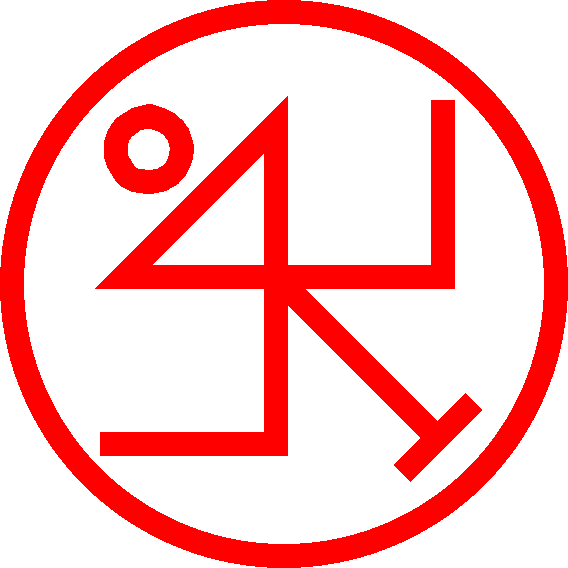Korean was originally written using Chinese characters, much like Japanese was, because both Korea and Japan looked at China as the big refined center of culture and civilization in the world.
But Chinese is a terrible script for Korean, arguably worse than it is for Japanese, because Korean loves to form words with tons of prefixes and suffixes, and Chinese’s “one word, one symbol” system is bad for that.
So literacy in Korea was very, very low. Then along came King Sejong (the Great). He was a devoted ruler who felt a great responsibility for his people, and hated the fact that Korean was so hard to read and write. So he personally designed Hangul to solve this problem. (Probably he consulted some smart advisors for test-driving it or working out a detail or two, but history considers the king to pretty much be the personal inventor of the script!)
In its official proclamation in (probably) 1446, he wrote (slight paraphrase):
The language of our people is different from that of the Chinese and thus cannot be expressed by the written language of Chinese people. Because of this reason, the pleas of illiterate peasants are not properly understood by the many leaders. I am saddened by this.
Therefore, 28 letters have been newly created, so that each person may become familiar with them and use them daily in an intuitive way.
What a guy!
The king’s name in Hangul
There is a palace plaza in Seoul which has a statue of him, with his name on it:
This is written using the slightly older forms of a few jamo. Here it is in modern form:
Sejong Daewang, “Sejong (the) Great.”
Let’s break down that name a bit:
- se: You saw the jamo for “S” in “Style”. The jamo for “E” is the two tall strokes with the little horizontal stroke.
- jong: You saw the jamo for “NG” in “gang“. The jamo for “J” is similar to the one for “S” but has the upper palate drawn to show how in “J” the sound stops. The “O” is new, but it’s a wide vowel because you round your lips to say “oh”.
- dae: We explained the jamo for “D” on the way to the one for “T” in “Style”. The vowel ae is the two tall strokes joined at the middle.
- wang: Now this one is a bit weird, so let’s break it down.
I told you back at the beginning of this series that a vowel can have a w or y sound before it but that it’s written as part of the vowel, not as a consonant. So here we are:
Notice that since the “w” is part of the vowel, we consider the syllable to start with the silent/placeholder consonant. So we draw the circle jamo, which at the beginning of a syllable is the placeholder.
And at the end of the syllable we also draw the circle jamo, because at the end of a syllable it’s “NG”.
But in the middle we draw both the jamo for “O” and the jamo for “A”, because the combination of the two means “Start off the sound A by rounding your lips”, or in other words, “put a W in front of the A”.
So there you have it. Hangul, and the name of the benevolent leader who created it so his people could read. Sejong the Great.
October 9th (the day of 1446 in which Sejong published the system) is now a national holiday in South Korea called Hangul Day: 한글날. And if you paid attention to everything you learned so far, you can see that the third syllable of that phrase is nal (since you saw the na- in nam and the -l at the end of “Style”). Hangul-nal. Hangul Day.
Next October 9th, raise a glass for King Sejong.
More info from Wikipedia (the articles have plenty of citations):
- Hangul
- Sejong the Great
- The king’s proclamation, Hunminjeongeum (“Correct Sounds for the Instruction of the People”)
- Hangul Day



